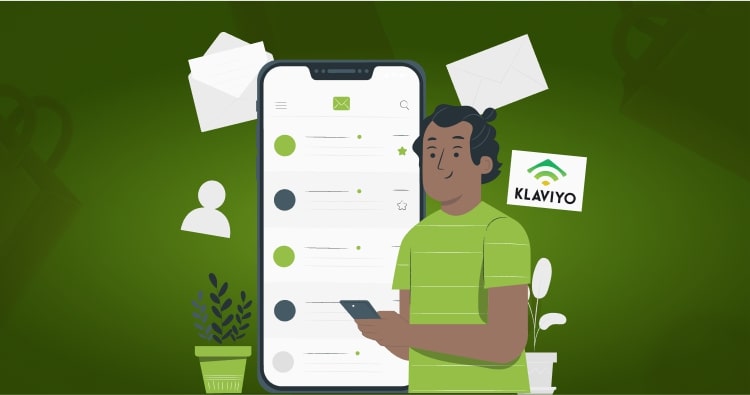
Last Updated | May 24, 2023
In this age of digitization, the power of online retail has soared to unprecedented heights, with global e-commerce sales projected to reach a staggering $6.3 trillion by 2024. Now, more than ever is the opportune time to harness this potential and carve out your own thriving online business.
But hold on. We know what you’re thinking. The thought of creating a Shopify app might seem daunting, with images of complex code and endless roadblocks flashing through your mind. Fear not, for we bring you good tidings! In this blog post, we will walk you through the process of building a Shopify app using Node.js and React – two powerful tools that will become your trusty companions on this development journey.
Are you ready to unlock the true potential of your online store? Let’s dive in!
- TRUELIST states that there are more than 9M websites that are currently using Shopify
- According to EXPLODING TOPICS Shopify users have installed 25M+ applications from the Shopify Application store
What Are Shopify Apps?
Shopify apps are incredibly useful tools that can greatly enhance and expand the capabilities of your Shopify store. They provide a wide range of features and functions to help you optimize your business operations and improve the overall shopping experience for your customers. Acting as add-ons or plugins, these apps offer numerous benefits, such as inventory management, streamlined order processing, effective marketing strategies, and increased sales.
Read Also How To Develop An eCommerce App On Shopify?
The Shopify App Store offers thousands of apps to choose from, catering to different aspects of your business, including customer support, email marketing, social media integration, analytics, and more. Regardless of whether you’re a small business owner or a well-established e-commerce brand, these apps offer great flexibility and customization options, allowing you to tailor your online store to perfectly fit your specific needs and stay competitive in the market. Embrace the power of Shopify apps and unlock the full potential of your online business!
Things To Consider Before Building a Shopify App
Are you thinking about building your very own Shopify app? That’s a fantastic idea! But before you dive headfirst into the development process, let’s take a moment to consider some important factors. Here are some that you should consider when building a Shopify app or you can simply rely on a Shopify app building agency to do it for you.
Read Also How to create a Shopify app at an affordable cost?
Research Everything
It’s time to put on your detective hat and do some market research. Explore the demand for your app idea and check out the competition. Is there a gap in the market that your app can fill? Investigate and find out!
Know Your Audience
Who are you building this app for? Define your target audience and get to know their pain points and needs. By understanding their struggles, you can create an app that truly solves their problems and makes their lives easier.
Uniqueness Is Key
There is cutthroat competition. Your app is sitting among a sea of others in the Shopify ecosystem. What makes it stand out? Identify your app’s unique selling proposition (USP). What sets it apart from the crowd? Highlight that special something that will make merchants flock to your creation.
Read Also Shopify Theme App Extension Setup Guide
Features
Time to get creative! Map out the functionalities and features your app will offer. Think about what your target audience truly needs and prioritize those features. Remember, integration with the Shopify platform is crucial for a seamless experience.
Is It Doable?
Evaluate the technical feasibility of your app idea. Consider the tools and resources available to you. Can you tackle it in-house, or will you need to rope in some external help? Take into account the time and cost implications too.
Pricing Strategy
How will your app make money? Define your monetization strategy. Will you charge a one-time fee, a recurring subscription, or opt for a freemium model? Research similar apps and choose the pricing strategy that fits your app’s value proposition.
Read Also How To Install Apps in Shopify
Market it Effectively
It’s time to show off your app to the world! Develop a killer marketing plan that includes app store optimization, engaging content marketing, social media promotion, and even partnerships with influencers or other app developers.
Monitor After Launching
Your job doesn’t end with the launch. Plan for ongoing app support and updates. Be ready to listen to user feedback, fix bugs, and add new features. Providing top-notch customer support and store maintenance will help you build a stellar reputation and keep your users happy.
Read Also How Much Does It Cost To Build A Shopify App
Follow The Rules
Familiarize yourself with Shopify app store guidelines and policies. Make sure your app meets all the requirements so you have a smooth sail through the approval process and get listed on the Shopify App Store.
Play It Safe
Don’t forget the legal and privacy aspects of Shopify app development. Ensure your app complies with data protection regulations and includes a privacy policy that outlines how user data is handled. Trust and transparency are paramount.
Read Also What is Shopify App Blocks
Make It a Pleasure to Use
Last but not least, design an app that users will adore. Focus on providing a seamless and intuitive user experience with your Shopify website design. Stick to Shopify’s design principles and guidelines to create a visually appealing and user-friendly interface.
Steps For Building a Shopify App With Node And React
So now that we have covered all the basics, let’s get started with our main concern: How to build a Shopify app? Below are some of the basic steps, which will make building a Shopify app with Node, and React effortless. While these steps are easy to perform, they can be overwhelming if you are new to this. In that case, it is recommended to consult a trusted Shopify development company and benefit from their Shopify app building services to rest assured throughout the process.
Read Also How To Hire Someone To Build Shopify Store In The USA
Step 1: Registering a Shopify Partner Account
The first step is to make an account on Shopify. This is your gateway to offering your fantastic apps and services to real store owners. You can embrace the power of Shopify and unleash your creativity.
Step 2: Creating a Test Store
As a Shopify Partner, you can create as many development stores as you want. This allows you to test your themes and apps before opening them to real storeowners. Experiment, iterate, and perfect your creations in a safe environment.
Step 3: The Installation of the Latest Node.js
Node.js is a popular and versatile runtime framework for JavaScript used by Shopify backend developers. Make sure you have the latest version of Node.js installed, along with a package manager like npm. If you’re new to Node.js, don’t worry! There are plenty of tutorials available to help you get started.
Read Also Future of Shopify – eCommerce Software as a Service
Step 4: Inaugurate Shopify CLI
Shopify CLI is a command-line interface tool that simplifies app and tool development for Shopify. It generates apps in Node.js, Ruby on Rails, and PHP, as well as app extensions and Shopify themes. With Shopify CLI, you can automate common development tasks like Shopify theme development and Shopify theme customization to streamline your workflow.
Step 5: Installing React Language
The Shopify framework makes use of React as its default language to create web and mobile apps. So get your hands on the latest version of React installed to make the most of its capabilities. With this powerful tool, you can create dynamic and interactive user interfaces effortlessly.
Step 6: Signing in to Shopify Along With Your CLI
Once you are all equipped to build a Shopify app, sign in with your CLI. This will make it possible for you to integrate your development process with the Shopify platform seamlessly.
Step 7: Starting a New Project
Once you’re logged in, it’s time to scaffold a new app for Shopify. Use the command in your terminal to create a new project and let the magic begin: $ Shopify app create node. Your app will be created in a new subdirectory, and you’ll see it appear in your partner dashboard.
Step 8: Create a Local Development Server
To bring your app to life, launch a local development server using the command: $ Shopify app serve. The CLI utilizes ngrok to provide the custom app with a unique URL. Remember to authenticate ngrok using the command: $ Shopify app tunnel auth <token>. As a result, you can enjoy an effortless development experience that is secure.
Step 9: Installation Of Your App Into Your Developmental Store.
Now that your server is operational, it is time to set up your app in the store. Open a new terminal window and run the command $ Shopify app open. Now you can witness your app in action and smoothly carry out the integration with your store.
Read also Top 15 Reasons Why We Convert Shopify Store To Mobile App?
Step 10: Building Your Application
Now that your infrastructure is in place let the building begin! Unleash your creativity and start bringing your app to life. With the power of Shopify at your fingertips, the possibilities are endless.
Step 11: Adding Products
Don’t forget to add some sample data to test your app. Populate your development store with products, customers, and even draft orders using the command: $ Shopify populate. This will give you a realistic environment to fine-tune your app.
Step 12: Add Empty State
Shopify Polaris can help you in creating a stunning user interface. The process is started by adding an empty state. As a result, you can test your frontend components to offer a user-friendly graphic interface to your customers.
Step 13: Combine a Resource Selector
Now it’s time to enhance your app with a search-based interface using App Bridge. App Bridge is a versatile vanilla JavaScript library provided by Shopify. It empowers you to find and choose products for your app with ease. Make it simple for merchants to navigate and select the products they need.
Step 14: Adding a List of Resources.
Take advantage of the GraphQL Admin API to set up a resource list for your app. This powerful Shopify API allows you to query data and display products in a structured manner. With a resource picker in place, you can showcase products and provide an efficient browsing experience for merchants.
Step 15: Touch Upon Prices
With your GraphQL query ready to go, you can now modify product data, including prices. Empower merchants to update prices effortlessly within your app. Give them the flexibility and control they need to manage their inventory effectively. Watch as your app becomes a valuable tool in their day-to-day operations.
Types Of Shopify Apps: Custom Vs. Public Apps
Shopify offers a world of app options at your fingertips to enhance the online presence of your business. Among these options, you’ll come across two main types: Custom apps and Public apps. Each type brings its own unique advantages to the table, so let’s delve into what makes them so compelling.
Custom Apps
Custom apps are the best choice if you want solutions tailored to your specific business needs. Developed by Shopify experts who truly understand the ins and outs of your business model, custom apps offer a personalized approach to tackle your challenges head-on.
With custom apps, you can expect features and functionalities that are custom-built to seamlessly integrate with your existing systems, providing a user experience that perfectly aligns with your brand. The beauty of custom apps lies in their flexibility and scalability, ensuring they can adapt and grow alongside your business, giving you a competitive edge in the ever-changing world of e-commerce.
Public Apps
While Public apps created by third-party developers are available to all Shopify users, these apps cover a wide range of business needs and come packed with a wealth of features and functionalities. Before being made available on the Shopify App Store, these apps undergo a rigorous vetting process to ensure they meet Shopify’s quality standards and deliver value to merchants like yourself.
With the App Store at your disposal, you can explore an extensive catalog of public apps in categories like marketing, SEO, customer support, and inventory management app, to name just a few. Public apps are ideal for businesses seeking ready-to-use solutions that can be implemented quickly, backed by a proven record of accomplishment of success.
Custom apps and public apps each have their own unique advantages. Custom Shopify apps shine when it comes to addressing your specific business requirements, offering tailor-made solutions that fit your needs like a glove. Their adaptability means they can evolve alongside your business, making them a worthy investment. On the other hand, public apps provide a wide range of ready-made solutions with which you can save time and effort if you are in search of quick and easy solutions.
So before coming to a conclusion about using any of these apps, consider all the aspects of your business and take the decision accordingly. Before you get started, note that to use the custom apps, you will need huge investments and resources, but at the end of the day, you can enjoy customization and scalability.
In the case of public apps, the solutions are cost-effective and quick to give your business an instant boost, but they may not offer the same level of customization as you get with the custom apps. Well, whatever you choose, there are a myriad of possibilities to let your online store stand out.
It goes without any doubt that all online businesses want to stand out in this era of digitalization and cut-throat competition. So if you are one of them, Folio3 is your perfect bet. We are a leading Shopify app building company and we boast a team of highly skilled and experienced Shopify app developers ready to turn your ideas into reality.
We take pride in offering comprehensive Shopify app building solutions designed to meet your specific business needs regardless of the size of your business. From Shopify app development services to Shopify store development, you will get all your online business needs fulfilled here.
Our dedicated team is here to provide top-notch solutions, including Shopify speed optimization, theme development, and theme customization. All these solutions are offered with the utmost quality to ensure a seamless and visually appealing shopping experience for your customers. With our expertise and commitment to excellence, we can be your trusted Shopify App Building firm to make a successful Shopify store.
FAQs – Building a Shopify App with Node and React
Do I Need To Be Familiar With Shopify To Build A Shopify App With Node And React?
It’s helpful to have some familiarity with Shopify, but it’s not a strict requirement. Shopify offers extensive documentation and resources to guide you through the app-building process. However, it’s crucial to have a good understanding of Node.js and React since they form the foundation of your app.
Can I Monetize A Shopify App?
Absolutely! You can monetize your Shopify app by charging a fee for usage or implementing a subscription model. Shopify provides the infrastructure for managing app billing. It allows you to set prices and collect payments. You can also explore other monetization strategies, such as offering premium features or integrating Shopify with third-party services.
How Do I Deploy A Shopify App Built With Node And React?
Deploying a Shopify app involves hosting the Node.js server and the React front end. You can deploy the Node.js server to cloud hosting providers like Heroku or AWS Elastic Beanstalk. For the front end, you can use services like Shopify’s App Bridge or embed the React application directly into the Shopify admin interface. Shopify provides guidelines to help you deploy and distribute your app effectively.
Are There Any Limitations Or Considerations To Keep In Mind When Building A Shopify App With Node And React?
While Node.js and React offer great development environments, there are some limitations and considerations. You need to follow Shopify’s API usage guidelines and security requirements when building your app. It’s also important to optimize performance, ensure scalability, and make your app compatible with different devices and browsers. Familiarizing yourself with Shopify’s documentation and guidelines will help you navigate these considerations effectively.
Source: https://ecommerce.folio3.com/blog/building-a-shopify-app/






